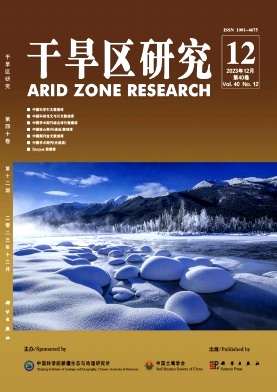Study on Plant Species Composition and Richness of the Mountain Coniferous Forests in Xinjiang
Q3 Environmental Science
引用次数: 3
Abstract
After carrying out the survey of 122 plots at 11 locations in the Altay Mountains (Altay),Kunlun Mountains (KL in abbreviation,the same below),and northern and southern slopes of the Tianshan Mountains (NT and ST respectively) in Xinjiang,it is found that the plant species richness of coniferous forests in Altay is significantly higher than that in ST and KL; plant species richness of Picea schrenkiana forests is significantly lower than that of P. obovata forests. According to the Sorensen Index,the plant composition in ST and KL is similar,and it is also similar in Altay and NT; the plant composition in Larix sibirica forests and Picea obovata forests are similar,but that in Juniperus centrasiatica and J. jarkendensis forests is quite different from that in Pinus sibirica and Abies sibirica forests,L. sibirica forests and Picea obovata forests. Species richness decreases significantly with the increase of altitude and mean annual temperature (MAT) but increases significantly with the increase of latitudes in whole Xinjiang. Species richness decreases with the increase of total basal area (TBA) in Altay and KL. According to the GLM (General Linear Model),aspect of plots (ASP) affects significantly the plant species richness in whole Xinjiang. Forest type and TBA also affects significantly the plant species richness in north Xinjiang. While in south Xinjiang,the plant species richness is significantly affected by annual precipitation (AP),slope position (POS) and TBA.新疆山地针叶林植物种类组成及丰富度研究
通过对新疆阿勒泰、昆仑山(简称KL,下同)和天山南北坡(分别为NT和ST) 11个地点122个样地的调查,发现阿勒泰针叶林的植物物种丰富度显著高于ST和KL;雪山云杉林的植物物种丰富度显著低于倒卵云杉林。根据Sorensen指数,ST和KL的植物组成相似,altai和NT也相似;西伯利亚落叶松林和黄云杉林的植物组成相似,而刺柏林和刺槐林与西伯利亚松林和西伯利亚冷杉林的植物组成差异较大。西伯利亚森林和云杉森林。物种丰富度随海拔和年平均温度的增加而显著降低,但随纬度的增加而显著增加。物种丰富度随总基底面积(TBA)的增加而降低,根据GLM (General Linear Model),样地坡向(ASP)对整个新疆的植物物种丰富度有显著影响。森林类型和TBA对北疆植物物种丰富度也有显著影响。南疆植物物种丰富度受年降水量(AP)、坡位(POS)和TBA的显著影响。
本文章由计算机程序翻译,如有差异,请以英文原文为准。
求助全文
约1分钟内获得全文
求助全文
来源期刊

干旱区研究
Environmental Science-Water Science and Technology
CiteScore
2.50
自引率
0.00%
发文量
4294
期刊介绍:
 求助内容:
求助内容: 应助结果提醒方式:
应助结果提醒方式:


